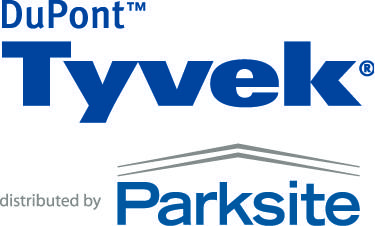Manufacturer, Dealers Partner With Trade Association to Offer Free Education for Contractors

All serious construction business owners have at least two things in common. First, continuing education is key to improving their businesses. Because the business world is constantly changing, to remain successful, construction business owners need to keep up with new ways of doing things as well as advancing their business systems and management skills if they want to stay ahead of their competition. Second, they need to make sure they surround themselves with the right resources so they can get the education they need from reliable sources at an affordable price.
This fall contractors will be able to get both in the same place thanks to window and door manufacturer Andersen® Windows. Thanks to the efforts of Dealer Account Representative Don Hamel, Andersen® Windows has pulled together a series of five FREE Contractor Educational Boot Camps that will be held at the Rhode Island Builders Association (RIBA) offices in East Providence RI. I will be the presenter at each of these events. In addition to the support from RIBA and Andersen Windows several lumber and building materials dealers and product manufacturers have joined together to sponsor these events.
The five boot camps will include the following dates and topics:
 9/26/13: Marketing Boot Camp: Targeting the Right Customers
9/26/13: Marketing Boot Camp: Targeting the Right Customers
10/3/13: Estimating Workshop: Know What You’re Selling Before You Sell It.
10/10/13: Small Business Finances and Profit Strategies for Non-Accounts
11/7/13: Sales Workshop-Smart Selling for Tough Times
11/14/13: Production Workshop-You Sold It Now You Need to Build It
Why these topics?
The list of topics above was put together to help give contractors a comprehensive exposure to several important areas in their businesses. The content of these sessions will include valuable and timely information that will help contractors differentiate themselves in the marketplace and make more money. Also, each of these sessions has been approved for two continuing education credit hours towards renewal of a Massachusetts Construction Supervisor's License (CSL). If you are a licensed Massachusetts contractor make sure you let RIBA know you want a certificate of completion for CSL credits when you register.

Who is sponsoring these events?
Here are all the logos of the businesses that are sponsoring these events. You can click on the logos to go to the web pages for each of these businesses.
| |
Brought To You By |
|
| |
 |
|
 |
|
-wr.jpg?width=132&height=80&name=tyvek__parksite_logo_(2)-wr.jpg) |
 |
|
 |
Don't miss out, register now!
If you would like to attend one or all of these boot camps you need to register for them individually. Seating will be limited; so make sure you register right away. Click on the links above for the class or classes you would like to take to see class descriptions and find the registration links.
I hope I’ll see you there!




 Hire and properly train employees before you already need them and their required skills up and running.
Hire and properly train employees before you already need them and their required skills up and running.  Before you actually increase your overhead costs test the marketplace you plan to work in to make sure you can sell at the increased pricing you'll need and can sell enough work at that price. Consider if you are in the right market to do business but also if you have the right marketing and sales skills in place.
Before you actually increase your overhead costs test the marketplace you plan to work in to make sure you can sell at the increased pricing you'll need and can sell enough work at that price. Consider if you are in the right market to do business but also if you have the right marketing and sales skills in place.



 “Never sell from an empty wagon”
“Never sell from an empty wagon”

 “A lead carpenter is involved in tasks and has responsibilities beyond the technical production aspects of a project. He/she is responsible for customer contact and communication, supervision of subcontractors and employees, managing the job site, scheduling, and safety issues. The success of a remodeling project during the production stage is the primary responsibility of the lead carpenter.”
“A lead carpenter is involved in tasks and has responsibilities beyond the technical production aspects of a project. He/she is responsible for customer contact and communication, supervision of subcontractors and employees, managing the job site, scheduling, and safety issues. The success of a remodeling project during the production stage is the primary responsibility of the lead carpenter.” Customer Satisfaction
Customer Satisfaction For example, if your business can't or won't share the
For example, if your business can't or won't share the  I am also aware of true lead carpenters who were hired as lead carpenters only to find out that they couldn't act as lead carpenters at the business that hired them because of the reasons shared above. When they find these conditions at their new job they quickly realize their opportunities for career and compensation growth are dramatically compromised. So many left for a different business and opportunity where they could use their skills and continue to advance their careers.
I am also aware of true lead carpenters who were hired as lead carpenters only to find out that they couldn't act as lead carpenters at the business that hired them because of the reasons shared above. When they find these conditions at their new job they quickly realize their opportunities for career and compensation growth are dramatically compromised. So many left for a different business and opportunity where they could use their skills and continue to advance their careers.

 I work with many companies in transition. The steps from being a “guy and a truck” to having an office and a bookkeeper and field employees are frequently challenging, but the milestones are pretty easy to identify. Ray the Remodeler used to work out of his house, but now he’s got an office. Bill the Builder used to pound nails, but now he does sales and supervises a crew. A less easily-measured but potentially even more important milestone is when the owner is able to recognize and maintain separation between himself (his personality, his idiosyncrasies, his strengths and weaknesses, his preferences, and his habits) from the company for the sake of the business.
I work with many companies in transition. The steps from being a “guy and a truck” to having an office and a bookkeeper and field employees are frequently challenging, but the milestones are pretty easy to identify. Ray the Remodeler used to work out of his house, but now he’s got an office. Bill the Builder used to pound nails, but now he does sales and supervises a crew. A less easily-measured but potentially even more important milestone is when the owner is able to recognize and maintain separation between himself (his personality, his idiosyncrasies, his strengths and weaknesses, his preferences, and his habits) from the company for the sake of the business. Adding the trappings of a business (office, staff) without shifting attitudes about the business has held many owners back and limited the potential growth of their companies. As long as they see themselves as remodelers, rather than owners of businesses that deliver the service of remodeling, they risk seeing their businesses as extensions of themselves, reflecting their own strengths and weaknesses. They also tend to see their companies as being so unique that they can’t be run using best business practices.
Adding the trappings of a business (office, staff) without shifting attitudes about the business has held many owners back and limited the potential growth of their companies. As long as they see themselves as remodelers, rather than owners of businesses that deliver the service of remodeling, they risk seeing their businesses as extensions of themselves, reflecting their own strengths and weaknesses. They also tend to see their companies as being so unique that they can’t be run using best business practices. Chase profit, not dollars. When owners start talking about how much their sales have increased, I remain unimpressed. Sales are nothing. Profit is where it’s at. Let’s say your volume is $600,000 in year 1 and $900,000 in year 2. A 50% increase, right? Wonderful, right? Maybe yes, and maybe no. If in order to sell and produce 50% more you had to hire a production manager, an estimator, and a salesperson and that caused a significant increase in your overhead, you could wind up with a lower net margin at the end of year 2. You might even end up with fewer actual dollars of profit to say nothing of the added stress of running more or bigger jobs. Know what numbers to watch, how to interpret them, and what to do to improve them.
Chase profit, not dollars. When owners start talking about how much their sales have increased, I remain unimpressed. Sales are nothing. Profit is where it’s at. Let’s say your volume is $600,000 in year 1 and $900,000 in year 2. A 50% increase, right? Wonderful, right? Maybe yes, and maybe no. If in order to sell and produce 50% more you had to hire a production manager, an estimator, and a salesperson and that caused a significant increase in your overhead, you could wind up with a lower net margin at the end of year 2. You might even end up with fewer actual dollars of profit to say nothing of the added stress of running more or bigger jobs. Know what numbers to watch, how to interpret them, and what to do to improve them. Stop trying to do everything yourself. If you haven’t already figured this stuff out on your own, hire somebody who has helped hundreds of contractors understand their numbers, replace habits with systems, and achieve a healthier relationship with their business. Comments from my clients reveal that many contractors struggle with the business side of things. Would you like to move “…from being clueless & frustrated to confident and comfortable….”? Would you find it “…refreshing to speak with someone who actually knew what they were doing, understood what (you were) trying to accomplish, and just made it happen.”? Are you sick of being “…lost in a sea of numbers…”?
Stop trying to do everything yourself. If you haven’t already figured this stuff out on your own, hire somebody who has helped hundreds of contractors understand their numbers, replace habits with systems, and achieve a healthier relationship with their business. Comments from my clients reveal that many contractors struggle with the business side of things. Would you like to move “…from being clueless & frustrated to confident and comfortable….”? Would you find it “…refreshing to speak with someone who actually knew what they were doing, understood what (you were) trying to accomplish, and just made it happen.”? Are you sick of being “…lost in a sea of numbers…”?
 It’s not easy to replace employees as they leave your team or to bring on new hires that possess the necessary skills to ensure your business grows. Doing so also delays the rate at which you your construction business can grow. You need to also consider whether you feel it is really fair to existing employees if you don’t give them the opportunity to move up within the company. If you are not developing employees as the company grows, you will eventually face a revolution, rather than an evolution. If this happens, you may be forced to replace these employees with others who already have the skills the growing business needs. This approach can be very risky and expensive.
It’s not easy to replace employees as they leave your team or to bring on new hires that possess the necessary skills to ensure your business grows. Doing so also delays the rate at which you your construction business can grow. You need to also consider whether you feel it is really fair to existing employees if you don’t give them the opportunity to move up within the company. If you are not developing employees as the company grows, you will eventually face a revolution, rather than an evolution. If this happens, you may be forced to replace these employees with others who already have the skills the growing business needs. This approach can be very risky and expensive. I always found that great employees are far more motivated by opportunity, responsibility, accomplishment and a sense of personal fulfillment than by the use of short-term incentives, such as cost of living wage increases, one-time bonuses, or an occasional pep rally. The right strategy, as long as it is sensitive and relative to the career path of your employees, will help keep those employees on the team. It can also steer your company in the direction of recognizing who can move up the ladder and how to train them to ensure that your business evolves. The effects of such strategies are longer lasting and often permanent for the business and its employees. Additionally, this strategy works well because existing employees are familiar with your company’s systems. They already fit into the culture and know how and why you do business the way you do. It will take longer for new employees to learn about your culture, adapt, adjust and become productive dedicated members of your team. Having employees start their career paths at the bottom of the ladder affords the business owner the advantage of limiting the expense and risks if the employees do not fit in or decide to leave the business.
I always found that great employees are far more motivated by opportunity, responsibility, accomplishment and a sense of personal fulfillment than by the use of short-term incentives, such as cost of living wage increases, one-time bonuses, or an occasional pep rally. The right strategy, as long as it is sensitive and relative to the career path of your employees, will help keep those employees on the team. It can also steer your company in the direction of recognizing who can move up the ladder and how to train them to ensure that your business evolves. The effects of such strategies are longer lasting and often permanent for the business and its employees. Additionally, this strategy works well because existing employees are familiar with your company’s systems. They already fit into the culture and know how and why you do business the way you do. It will take longer for new employees to learn about your culture, adapt, adjust and become productive dedicated members of your team. Having employees start their career paths at the bottom of the ladder affords the business owner the advantage of limiting the expense and risks if the employees do not fit in or decide to leave the business.
 When you serve anyone and are willing to build anything your business misses an opportunity to really stand out. Lots of businesses already follow that model. If you follow it too you will be just another one in the crowd. Instead, by choosing specifically who you will work for and what work type or types you will concentrate on, you can then create and build a brand that attracts your targeted niche. Make sure the niche market you choose to serve can support the required margins your business needs to do so and make sure to consider the skills required to sell to that niche. Remember, the economy will be soft for at least several more years, so choose niches and work types that will be in demand in your market. As Mick Jagger of the Rolling Stones sings: ““You can't always get what you want. But if you try sometime, you just might find, you get what you need”
When you serve anyone and are willing to build anything your business misses an opportunity to really stand out. Lots of businesses already follow that model. If you follow it too you will be just another one in the crowd. Instead, by choosing specifically who you will work for and what work type or types you will concentrate on, you can then create and build a brand that attracts your targeted niche. Make sure the niche market you choose to serve can support the required margins your business needs to do so and make sure to consider the skills required to sell to that niche. Remember, the economy will be soft for at least several more years, so choose niches and work types that will be in demand in your market. As Mick Jagger of the Rolling Stones sings: ““You can't always get what you want. But if you try sometime, you just might find, you get what you need” Don’t be different in the same ways other remodelers are different. Sounds stupid but why copy another business and call that being different. Besides, when you’re just like all the other companies the only differentiator in the eyes of the consumer might be price. Instead, be unique. Find ways to really stand out from the crowd in the way you do things and or the things you do. For example maybe you only hire female field staff to build your projects. Maybe you and your employees always wear company uniforms and name badges with your picture on it whenever you and or they show up for a sales call, service call or the first day at a new project. Or, maybe you will only install American made products (assume that is really possible these days!). As Jerry Garcia of the Grateful Dead once said: “You do not merely want to be the best of the best, you want to be considered the only one who does what you do”
Don’t be different in the same ways other remodelers are different. Sounds stupid but why copy another business and call that being different. Besides, when you’re just like all the other companies the only differentiator in the eyes of the consumer might be price. Instead, be unique. Find ways to really stand out from the crowd in the way you do things and or the things you do. For example maybe you only hire female field staff to build your projects. Maybe you and your employees always wear company uniforms and name badges with your picture on it whenever you and or they show up for a sales call, service call or the first day at a new project. Or, maybe you will only install American made products (assume that is really possible these days!). As Jerry Garcia of the Grateful Dead once said: “You do not merely want to be the best of the best, you want to be considered the only one who does what you do” You can’t do it all on your own and still have a life. As the legendary Canadian Rock Band Bachman-Turner Overdrive sang: “I've been taking care of business, it's all mine. Taking care of business and working overtime”. If running your business requires too much time away from the things you actually work to have or enjoy, you need to change how you do business.
You can’t do it all on your own and still have a life. As the legendary Canadian Rock Band Bachman-Turner Overdrive sang: “I've been taking care of business, it's all mine. Taking care of business and working overtime”. If running your business requires too much time away from the things you actually work to have or enjoy, you need to change how you do business.
 Your goals must be measurable
Your goals must be measurable
 Putting the pieces together
Putting the pieces together
 Create your plan
Create your plan  Once I had become clear on the
Once I had become clear on the 


 Ignoring for the moment the fine points of litigation, which Liability insurance company should you notify? Your current carrier? The one who had your policy at the time of the construction? Or both of those, plus every policy you’ve had during the past five years?
Ignoring for the moment the fine points of litigation, which Liability insurance company should you notify? Your current carrier? The one who had your policy at the time of the construction? Or both of those, plus every policy you’ve had during the past five years? Because Liability policies usually state specifically that they cover damage occurring during the policy period only, you’ll need to ask when the damage actually “occurred.” At the time of original construction — during the time the cracks allegedly appeared and continued to worsen — or on the day the actual collapse took place?
Because Liability policies usually state specifically that they cover damage occurring during the policy period only, you’ll need to ask when the damage actually “occurred.” At the time of original construction — during the time the cracks allegedly appeared and continued to worsen — or on the day the actual collapse took place?





